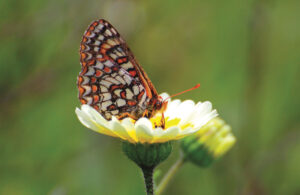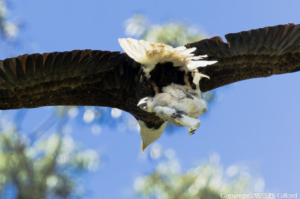Winter is high time for birding on the Bay, and now the San Francisco Bay Trail has become the area’s longest birding trail. The trail currently covers 260 miles of a planned 400-mile route. A new map and brochure, “Birding the San Francisco Bay Trail,” highlights 16 birding sites along the trail, including Petaluma’s Shollenberger Park, the Alviso Environmental Education Center, the San Francisco Presidio, and China Camp State Park. The San Francisco Bay Bird Observatory (SFBBO) launched the project in partnership with the San Francisco Bay Trail Project and the Coastal Conservancy. To get a copy, email outreach@sfbbo.org or call (408)946-6658.
One of the birds you are likely to see on the Bay this winter is the surf scoter, Melanitta perspicillata, a small black diving duck. The Bay is home to the largest wintering population of surf scoters along the Pacific Flyway, and although as many as 80,000 have been counted in the Bay, little is known about the birds’ habits.
As part of an ecological study on wintering waterfowl populations, this past winter Susan Wainwright-De La Cruz and other biologists at the San Francisco Bay Estuary Field Station of the U.S. Geological Survey tagged 90 male and female surf scoters with radio and satellite transmitters to follow their migration and breeding patterns. Scientists hope to pinpoint the reason for a steady decrease in the surf scoter population each year. Last June, scientists tracked a female scoter 2,000 miles to a boreal forest in Canada, where they found her nest and six eggs. Very few surf scoter nests have been found in the vast forests, and it was the first time that a specific scoter had been tracked to its nest. Samples from the nest are being tested to see if the high levels of mercury and other contaminants in the Bay could be contributing to the bird’s decline. To follow the scoters’ migration activities, visit www.werc.usgs.gov/scoter/2005.

.jpg)



